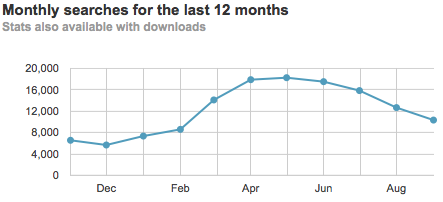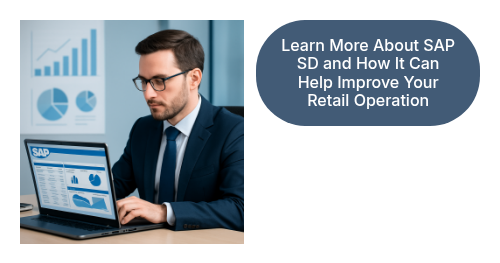SAP IS-Retail Customers
In the rapidly changing retail landscape, more than 10,000 global retailers rely on SAP IS-Retail to support modern commerce and supply chain needs. However, as mobile phone commerce surges and consumer behaviors like showrooming threaten traditional retail value, retailers must reimagine their strategies. Integrating robust inbound marketing with SAP and leveraging analytics can propel both online and in-store sales, giving retailers the competitive advantage they need in a digital-first world.

Mobile Phone Purchases Have Skyrocketed
This author has also found out that 57 percent of people over the age of 14 in Spain have made a purchase via mobile phone, and many of those have been done on a 'SmartPhone", i.e., iPhone or some sort of Android based phone.
Of these purchases, the vast majority have been for things like games, iphone apps and travel related purchases, such as train or hotel reservations or even car rentals.
Retail Sales and Grocery Sales
As you drill down into the data, you find out that some purchases have been made for what you might know as traditional retail purchases, such as clothes, food or even durables goods, but not that many.

Customers Are Showrooming
One other activity that mobile phones users have increasingly started doing is showrooming.

Showrooming
What profit looks like walking out your door
This is where, for those shoppers that must put their hands on the merchandise first, a smartphone is used in a store to look at an item and find out where it can be bought cheaper locally, perhaps at a competitors store, or to simply confirm a purchase online from an e-commerce site, not necessarily and most likely not, from the same retailer (otherwise, why buy it online if the price is the same).
Pro-Tip: Use mobile-first strategies with real-time personalized offers to recapture showrooming customers and drive on-the-spot engagement with digital coupons delivered via HubSpot Smart CTAs.
Once done, the consumer is on their merry way.
For the 10,000 retailers who use SAP IS-Retail, and all the rest for that matter, this means their expensive real estate just got a lot less valuable!
What to do.
What can be done.
How does the retailer offer more value and thus achieve more sales, than the online retailer can, who just got the sale, literally right out from under the physical retailers nose? As always, you must follow the consumer.
 Consumers can be elusive!
Consumers can be elusive!
Traditional Retail Methods Need Analytics To Work
All the traditional retail methods still work, but now, they need to be infused with a rich content experience, fertilized with the results of real-time, deeply ingrained analytics driven by what is now called big data. That's a fancy way of saying you got to offer content.
Classic Retail Sales Example

Let's take an example of a barbecue. These used to be something most anyone could make; cut a barrel in-half, or dig a hole in the ground, and voila, you have or had a top of line the barbeque. No more, now you want the barbeque experience.
 You want the barbeque experience!
You want the barbeque experience!
What sort of content might help both the barbeque supplier and the retailer to sell more barbeques? Of course, if I am a retailer who operates SAP, I will have access to SAP Retail Analytics and CAR or SAP Customer Activity Record. But that's just a start.
I think it helps to have been a publisher, so you learn to answer the who, what, why, when, where and how of things.
You might start by doing some research on the current search volume, using google trends, for "Barbeques", and as it turns out, right now, 'outdoor barbeque' has a fairly high search volume of over 300,000 a month with a nice seasonal trend, per google.
 Seasonal Search Trend
Seasonal Search Trend
Now that we know there is substantial search volume, we need to design and develop content, if we don't already have some. Most likely we do, and we can make life a lot easier if we conduct a content audit.
What Else Do SAP Retail Customers Need to Do to Succeed?
Once we know what we have, content wise, we need to do some brainstorming to answer those publisher oriented questions, and try to put yourself in the shoes of your consumer when formulating those questions.
By the way, the content you have will no doubt influence the questions you develop and the content you decide to develop. Your goal should be to develop content that is driven by your keyword analysis.
- What kind of barbeque grill is best - gas or charcoal.
- What sort of set up is required for any particular grill.
- What sort of maintenance is required on what is no doubt an expensive piece of equipment these days.
- How is this maintenance best performed.
- Who can perform any maintenance should it break in the future.
- Is there a local service center for your barbeque.
- Are there any enhancements you can add to this particular barbeque.
- Does it come in different sizes, colors or with different capabilities. Can those be bought later?
- How about Safety instructions?
- How about standard warranty information and extended warranty offerings.
- What is the expected duration of the barbeque? Lifetime, 5 years vs. one season.
- Where is the grill best positioned for the optimal barbeque experience?
- When is the best time of year to barbeque?
- Do you recommend different recipes at different times of the year?
- Can you produce "how to" videos on the care and feeding of your barbeque habit?
- Could you embed those in a barbeque barcode?
- Is there a Facebook fan page for your barbeque?
- Is there a social media strategy around the product or experience?
- Are there recipes that work better on one type of barbeque than another?
- Can you imagine YouTube videos to be produced or are there videos already out there that show you how to use it, recipes that people share that you can curate?
- How can consumers provide feedback?
- Do you have a blog about barbeques that you regularly maintain?
Be Relevant To Your Consumer
As you can see, it doesn't take long to come up with a lot of questions that might be valuable to consumers to answer when making their purchasing decision. However, consumers are all different and not all consumers follow the same path-to-purchase or ask the same questions when making a purchase.
Inbound Marketing Strategy
That is where the concept of Inbound Marketing comes into play. You see, today's 'always on' consumer still is asking those questions, but they are doing so while mobile, while cruising the web and while in the traditional retailers store.
Pro-Tip: Regularly refine buyer personas using both SAP retail analytics and HubSpot’s behavioral data to stay ahead of evolving consumer preferences.
You Need a Fully Integrated Inbound Marketing Platform

Though SAP CRM provides some of the functionality required to make the sale, such as sending out an e-mail, or interacting with the customer, the market now demands a fully integrated marketing platform which is integrated in a bi-directional (sends and receives) fashion to SAP IS-Retail.
The reasons for this are both technical and organizational.
Technical:
- The entire sales process above starts out with developing an understanding of your "buyer's persona".
This involves not just doing keyword research, but also developing an understanding of how difficult or costly it will be to rank for a particular keyword. - Once you have that buyer persona developed, (which has to be constantly revisited as new information becomes available), you have to develop a content strategy to answer the questions you can both imagine and learn from your sales force.
- For traditional retailers, knowing their buyers is a real challenge.
They have very little information about any single buyer, unless they happen to be a membership type operation, such as COSTCO or SAM's. - The next challenge is to develop content and marry it to a context aware content management system that can present answers to the questions prospects are asking based on where a buyer is, in the buying cycle (you are well out of the range of the capabilities of your CRM system at this level, typically).
- A further challenge is to have the ability to listen to your consumer in real time, such as on social media, and respond.
- Your marketing platform has to be able to provide real-time analytics and adjust the content being delivered based on the results.
Though I have not seen any system that creates what I would consider 'new content on the fly' based on where a buyer appears to be in the buying cycle, the hubspot platform can send prospects to different content using "Smart CTAs (Calls To Action)". - Your marketing platform also needs to be able to detect and alert you whenever any email you have sent to a consumer is opened so that a sales person can follow-up to answer any questions.
This should also be an in-store capability.
The last thing you want is to get a consumer into your store, and have them spend time wandering around looking for in-store assistance without being able to actually offer it.
This would make for a very poor customer experience. Many retailers are currently suffering from this exact scenario, especially those that have shaved in-store help down to an absolute minimum. Digital technologies around workforce scheduling have largely failed when it comes to ensuring there is a proper balance of instore help versus customer service expectations. - Finally, your inbound marketing platform needs to send prospects to the CRM side of the house, where additional offers can be made, such as discounts delivered directly to the showroomer's smartphone, in real-time.
Once a sale is made, that needs to be fed back to the Hubspot platform via an integration layer so the system is aware of the consumer's lifecycle stage and can subsequently offer additional valuable content.
Pro-Tip: Map and automate lead handoff triggers between SAP and HubSpot—ensuring no sales opportunity falls through the cracks during multi-channel shopper journeys.
Organizationally, the requirements and impacts are even more complex:
- It just plain takes more time and effort to make the sale.
Sales staff, whether in the store or in the field, now have to not only really strive to understand their customer's buying habits, they also have to work closely with marketing to convey this information to the marketing team, in a way that has mostly never been done, or worse, been done poorly in the past. - The traditional marketing department will need more people with a wider set of skills, not just specialist but generalist who can produce content, and do all the before work, i.e., keyword analysis, buyer persona analysis, and content idea generation, as well as putting up a landing page, with all the forms, links and SEO, without any IT support.
For many marketers, this is a radical change to their traditional way or working and will require a sustained change management effort. - Because the Inbound Marketing approach is 'always on', meaning your offers are out there 24X7, you also have to rework the integration between the marketing platform and your merchandising and at a higher level, your Supply Chain Management system.
Specifically, you have to develop analytics around what you are doing on the Inbound Side, down to the specific number of lead conversion events occuring in specific time buckets, to specific reorder points (ROP) happening in the SAP system.
Otherwise, you stand a near certain chance of having a supply and demand imbalance on an ongoing basis.
Pro-Tip: Invest in content training for traditional marketing and sales teams to accelerate adoption of inbound methodology and drive seamless collaboration across departments
Retail Environment Has Radically Changed
For many CIOs in the traditional retail environment, this is a radical change. Their typical questions about new systems are just that, systems oriented questions, versus "capabilities to deliver" questions.
For instance, though it may well be legit to worry about what backup strategy you have with the marketing platform, for the marketing department, it is far more important to know what content management capability is offered and how soon can they get a new landing page up-on their own!
Marketing now has to create much more content, across a much wider variety of domains, including Blogs, White Papers, How-To Guides, Points of View, Executive Overviews, Video, Social Media, Mobile Apps, Printed Material, Web Ads based on keyword analysis, and Broadcast Media, to answer questions consumers are asking 24X7.
Marketing is now not only capable of gathering deep analytical information from any/all campaigns across any/all media where their content is positioned, they must now be able to analyze it and prove their ROI to the business, in real time.
What does this mean?
Hubspot's iPhone App
How about having Hubspot's iPhone app in a board level meeting and watching conversions happen across the website, no matter where or when.
Been there, doing that!
Integrating Hubspot with SAP CRM and SAP more generally is both a technical project with significant challenges as well as a project that implies deep business process changes in marketing, sales and procurement, and potentially in the area called Trade Promotion Management, which is used for developing a budget for trade promotion cross-channel.
Integration
The integration is also different depending on which version of SAP you are using, and may also involve changes to your MRP strategy settings, your budgeting process overall, and your pricing approach.
Artificial Intelligence and Retail Operations

Artificial intelligence has already begun to impact retailers, with Hubspot leading the way in incorporating AI into its system to drive further process improvements within the entire retail value chain. In today's 'always on' consumer market, retailers must develop a deep understanding of their buyer's persona to provide contextualized content that answers the questions their prospects are asking.
Hubspot's inbound marketing platform provides real-time analytics to adjust content delivery based on results, and its Smart CTAs send prospects to different content based on where they appear to be in the buying cycle. The integration of Hubspot with SAP CRM and SAP more generally implies deep business process changes in marketing, sales, and procurement, and potentially in the area of Trade Promotion Management. With the use of artificial intelligence, retailers can stay ahead of the game and provide their customers with the optimal buying experience.
Pro-Tip: Leverage built-in HubSpot reporting and SAP BW dashboards to measure campaign effectiveness and adjust tactics in real time for maximum ROI.
Grocery Retail Needs Inbound Marketing
Retail grocery stores can utilize Inbound Marketing strategies to drive more sales while also reducing food wastage, in line with the United Nations' Sustainable Development Goal 12.3. By developing a deep understanding of their buyer personas and creating a content strategy to answer their questions, retailers can engage with consumers both in-store and online.
A context-aware content management system can present relevant answers to questions based on a consumer's location and buying cycle, while real-time analytics can adjust the content being delivered. By listening to and responding to consumers on social media, retailers can provide a better customer experience and ultimately drive more sales. Integration with a CRM system can also allow for additional offers and discounts to be delivered in real-time. While implementing Inbound Marketing may require significant changes to a retailer's business process, it can ultimately lead to a more engaged and loyal customer base.
Decision Makers Need Insight
Retail decision makers can make better decisions by utilizing the valuable insights provided by SAP and Hubspot. With the use of Hubspot's inbound marketing platform, retailers can gain a deeper understanding of their buyer personas and develop a content strategy to answer the questions their prospects are asking. The platform's real-time analytics and Smart CTAs can adjust content delivery based on a consumer's buying cycle and provide relevant answers to their questions.
Integration with SAP CRM and SAP more generally can also lead to deep business process changes in marketing, sales, and procurement, ultimately resulting in a more engaged and loyal customer base. The incorporation of artificial intelligence into Hubspot's system further drives process improvements within the entire retail value chain, allowing retailers to stay ahead of the game and provide their customers with the optimal buying experience. By utilizing these insights, retail decision makers can make data-driven decisions that lead to long-term success.
Comparative Retail Performance Measurement

Retail decision makers often need to compare the performance, by square footage of different retail locations, such as New York and San Francisco. To do this, they can utilize the SAP Data warehouse, which provides valuable insights into the sales and performance of each location. For example, decision makers can compare the sales per square foot of each location and identify areas for improvement. They can also run experiments, and have the New York location be configured different than the San Francisco location, and make a data driven evaluation of which works best.
New Product Introductions
In today's highly competitive market, new product introductions can make or break a business. By combining data-driven insights and inbound marketing, businesses can educate their consumers and create a more successful product launch. Understanding buyer personas and creating a content strategy that answers their questions is crucial.
Real-time analytics can adjust the content being delivered, and integration with a CRM system can allow for additional offers and discounts to be delivered in real-time. Retail decision makers can also utilize the valuable insights provided by SAP and Hubspot, making data-driven decisions regarding the success or failure of a new product being introduced. Real-time offer management can also be used to run rapid promotional marketing experiments to test out consumer sentiment.
Comply with Regulatory Bodies
In the retail industry, complying with various rules and regulations is a must. One of the most complex compliance requirements is product labeling. Retailers must ensure that their products have the correct labeling, which can be a daunting task. Fortunately, SAP TPM and the SAP IS-Retail solution can help retailers comply with these regulations.
By using this software, retailers can easily manage and monitor their compliance efforts, ensuring that they are always up to date with the latest regulations. This can save retailers a lot of time and effort, as well as mitigate the risk of non-compliance penalties. With SAP TPM, retailers can focus on providing the best possible customer experience while also ensuring that they are compliant with all necessary regulations.
Data Driven Decision Making
By leveraging the data provided by SAP, retailers can make data-driven decisions that lead to long-term success. The integration of Hubspot with SAP CRM and SAP more generally can also lead to deep business process changes in marketing, sales, and procurement, ultimately resulting in a more engaged and loyal customer base. With the use of artificial intelligence, retailers can stay ahead of the game and provide their customers with the optimal buying experience. By utilizing these insights, retail decision makers can make informed decisions that drive performance and growth.
Most Companies Under Increasing Pressure to Improve Performance

The retail environment is constantly evolving, with ecommerce competitors exerting pressure on traditional retailers to improve their performance. This pressure can create pain points for retailers, such as the need for sales staff to understand their customers' buying habits and work closely with marketing to convey this information effectively.
Inbound marketing can help relieve this pain by providing real-time analytics to adjust content delivery based on results, allowing retailers to better engage with their consumers both in-store and online. Additionally, integration with a CRM system can allow for additional offers and discounts to be delivered in real-time, ultimately leading to a more engaged and loyal customer base. While implementing inbound marketing may require significant changes to a retailer's business process, it can ultimately lead to long-term success in today's 'always on' consumer market.
Explore SAP SD Solutions
The retail industry’s rapid transformation means it’s more important than ever to have integrated sales, distribution, and analytics strategies tailored for success.
If you’re interested in actionable approaches to optimizing end-to-end SAP Sales and Distribution (SD), uncover real-world use cases, and learn practical ways to drive revenue and operational excellence, our comprehensive SAP SD education page is your next step.
Visit our SAP Sales and Distribution Learning Hub to deepen your understanding, access learning resources, and start planning your next innovation:
We can help.
People who read this also read:
- Build A SEM BPS Retail Industry Value Case
- 6 Secrets Of Integration Inbound Marketing With Retail Strategy
- Discover How To Integrate Inbound Marketing With Your Retail Strategy
- How To Use SAP BW To Prevent Retail Losses
- Does PCI DSS Compliance Affect You
- 8 Secrets to SAP Enabled Spend Performance Management
Thanks


